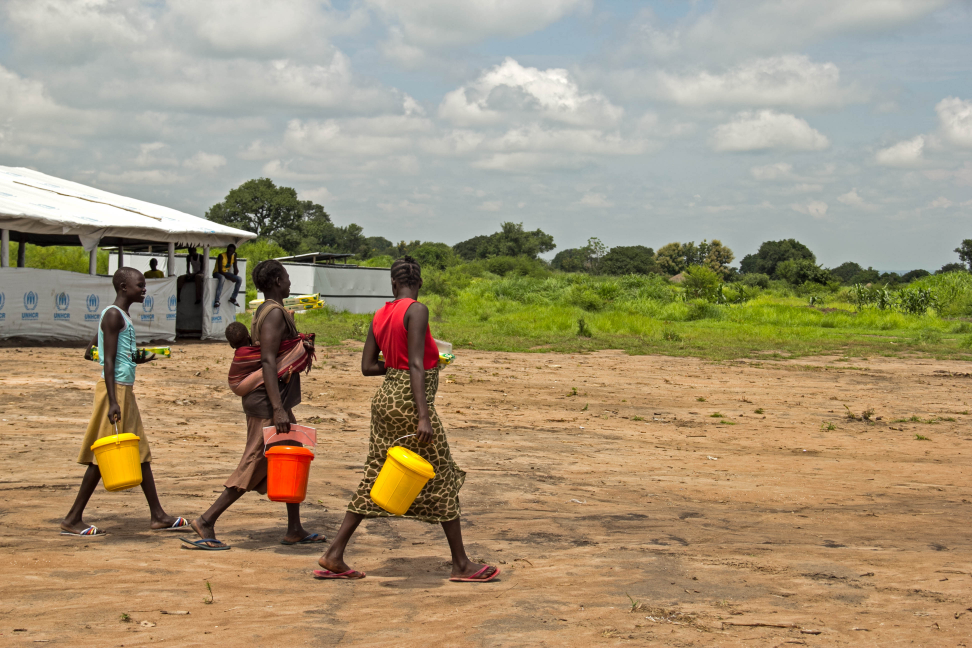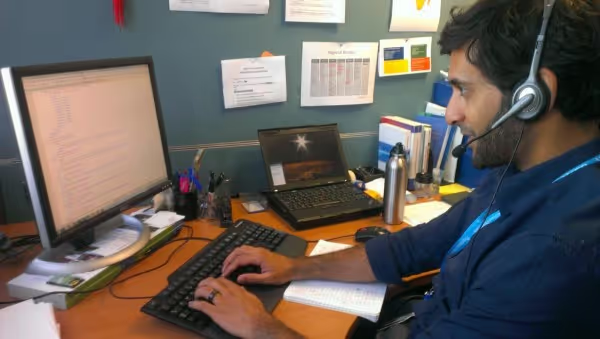Somalia and DR Congo: two very different guinea pigs

Somalia and DR Congo: two very different guinea pigs. Initial insights on IVR software.
It’s been a busy month of July – this blog entry provides the field perspective on mVAM from Somalia and DR Congo. We’ve also moved ahead with the IVR configuration process, trying out different pieces of software and doing a lot of test calls.
Somalia and Democratic Republic of Congo
Since our last blog post, the mVAM team has conducted scoping missions with WFP offices in Somalia and Democratic Republic of Congo. The idea was to come to grips with the challenges of implementing mVAM at the country level, contact partners, assess the technical challenges and develop work plans.
As we initially suspected, implementation challenges are very different in Somalia and in DR Congo. In Somalia, the project will be able to leverage strong information technology and telecommunications capacities in neighbouring Kenya. In DR Congo, the project will take place in an environment where telecommunication services are somewhat less advanced. This is likely to remain a running theme throughout project implementation. The mVAM project will be implemented with ‘two very different guinea pigs’, in the words of Angie, VAM Officer at WFP Somalia.
In Nairobi, Amit, Marie and Angie brainstormed implementation. In Somalia, it looks like we will be implementing the mVAM surveys in the area of Gaalkayo and, perhaps, on a small sample of pastoralist households in northern Somalia. Calls would most likely be placed from Nairobi – no problem finding Somali-speaking telephone operators in Nairobi. The cell phone network in Somalia is well-developed but quirky: calling one network to another is not always possible; dealing with this challenge will likely cause a few headaches for setting up the IVR system, including implementing complex call scheduling routines and managing a series of SIM cards. In Somalia, we will not distribute phones to our survey respondents at first, considering that access to cell phones is considered very high (reportedly 60-70% own a phone, whereas nearly everyone has access to one), and that cell phone distribution introduces complications in the field. It seems that VOIP calls are out of the questions for Somalia as call quality is unreliable. Another insight from the mission was that the project is too ‘small’ to attract interest from the big telecoms companies in Nairobi -- we would try an in-house IVR solution, and working with ‘smaller’ partners (e.g. start up companies) for live calls. A lot going on at the Nairobi iHub, a cluster of over 100 tech companies that could support the deployment of mVAM for Somalia. A real incubator, there’s even a restaurant serving Mexican food.
In DR Congo, Koffi and Moustapha identified the IPD camps of Goma and Katanga as potential areas to try out mVAM mobile surveys. We had initially considered the new refugee camps in Equateur as a target area, unfortunately network coverage there is just too unreliable. Interestingly, the Goma IDPs receive mobile money cash transfers from WFP; a test in Goma could show us how to integrate voice surveys with existing mobile transfer programs. Access to electricity seems to be an issue in DR Congo, the pilot would therefore be implemented in places where respondents have access to recharging services. Here again, the distribution of cell phones would take place but only to households without a device; at the national level, it’s now estimated that 47% of Congolese own a cell phone. Interestingly, in DRC, the market for telephony services is nascent; no iHub equivalent in Kinshasa. We seem to be the first people to enquire about call center or IVR services in Kinshasa. A quick test of VOIP calls worked well. We’ll be looking at that solution.
In both countries, we will be able to piggyback on existing face-to-face surveys to profile respondents prior to implementing voice calls. These surveys are scheduled in September and October.
Software for IVR configuration
‘Translating’ the standard WFP questionnaires into a series of automated voice questions is perhaps the most immediate challenge we have. It means streamlining the complex questions we have commonly used for years -- the trick is to fit a clear instruction for the survey respondent into a snappy audio message. We also spent some time testing software that can run the IVR calls.

In July, we tested Voxeo, an industry-standard voice technology platform; Amit’s code-writing skills were an advantage. Voxeo uses the .vxml language. Souleika, our colleague from Djibouti, recorded the questions in Somali. Marie did the same in French for DR Congo. Try out the demo Amit put together here (in French, Skype needs to be running on your computer). Voxeo seems free for demos on up to 2 simultaneous calls.
The people at Instedd, who specialize in technology solutions for the humanitarian community, gave us a demo of Verboice, a free and open-source IVR software. Verboice offers a sleek interface and seems to do many of the things we want to do – design call flows, manage lists of phone numbers, schedule calls and provide call logs. The interface is very easy to use, Jean-Martin was able to set up a 20-question call flow in a morning of work. Verboice seems to be the type of software accessible to WFP field officers. Now, the challenge will be to have one of these run calls in the field, a lot more testing lies ahead.
In the next update we’ll tell you more about our test calls and preparations for the face to face surveys.
Stay updated
Sign up for our newsletter to receive regular updates on resources, news, and insights like this. Don’t miss out on important information that can help you stay informed and engaged.
Related articles
.png)


Explore Elrha
Learn more about our mission, the organisations we support, and the resources we provide to drive research and innovation in humanitarian response.